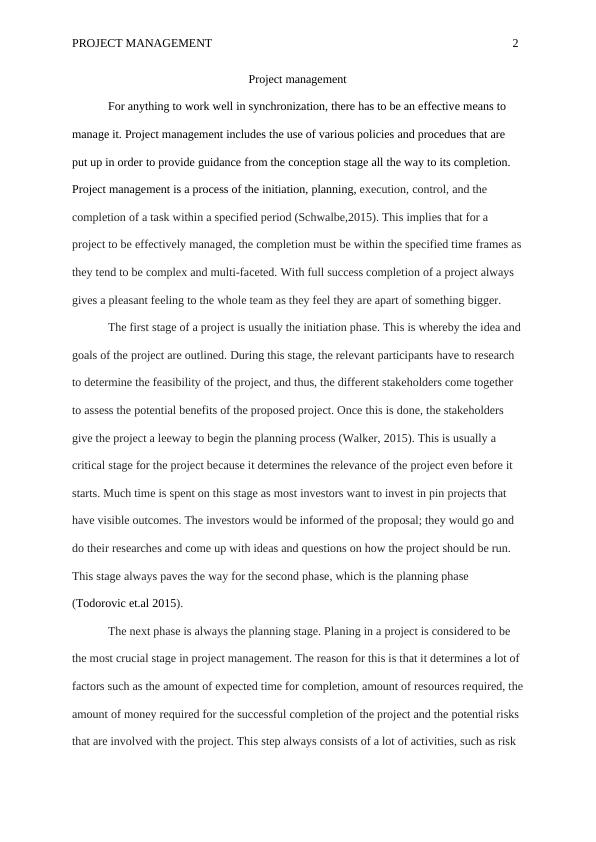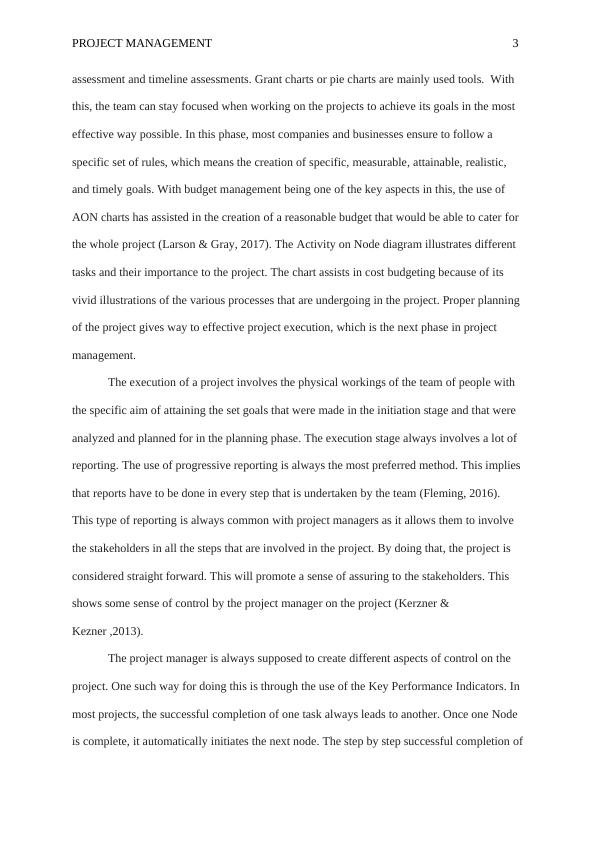Project Management
Critically discuss how your experience in Assessment Task 2 aligned (or did not align) with project management principles and analyse your experience against at least three knowledge areas.
6 Pages1474 Words44 Views
Added on 2023-03-21
About This Document
This article discusses the stages of project management, including initiation, planning, execution, and closure. It emphasizes the importance of effective management in ensuring the successful completion of projects.
Project Management
Critically discuss how your experience in Assessment Task 2 aligned (or did not align) with project management principles and analyse your experience against at least three knowledge areas.
Added on 2023-03-21
ShareRelated Documents
End of preview
Want to access all the pages? Upload your documents or become a member.
Project Management Assignment Expansion
|6
|1040
|99
Project Management assignment : OmniBuild
|19
|3276
|151
The Learning Communities LC-01A) building will go through
|2
|428
|150
Diploma of Project Management BSBPMG521 Manage Project
|11
|2865
|22
Project and Financial Management - Doc
|10
|1910
|72
Project Management Lifecycle - Doc
|9
|2182
|66



